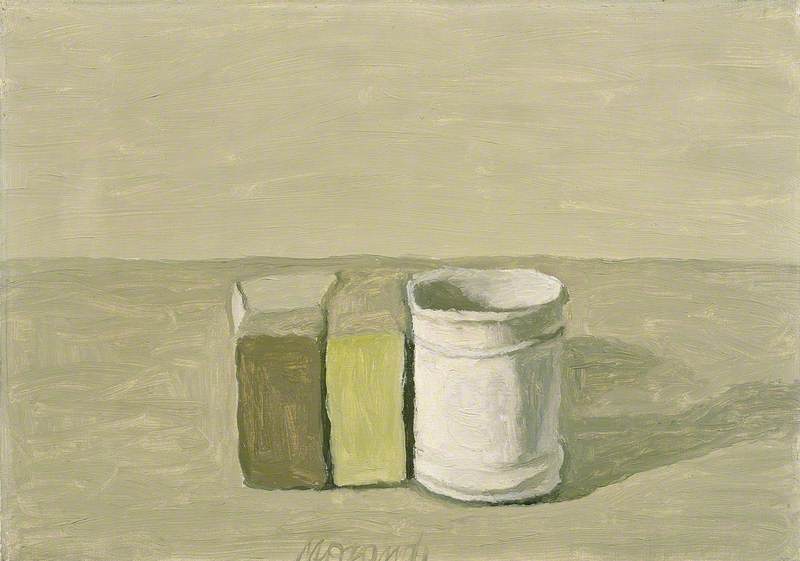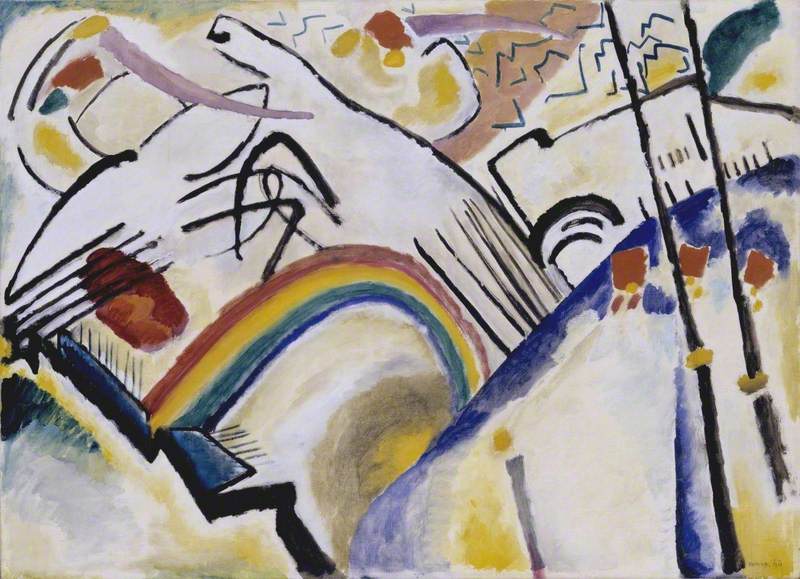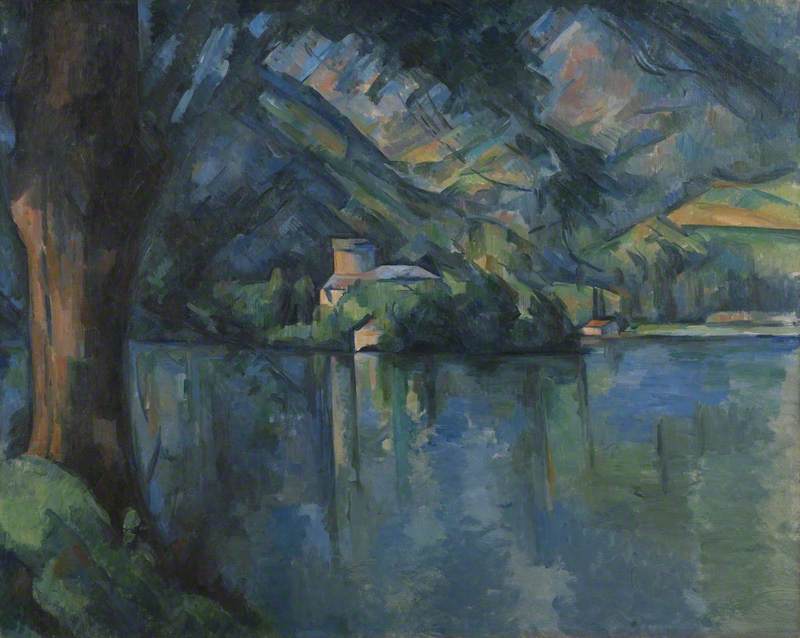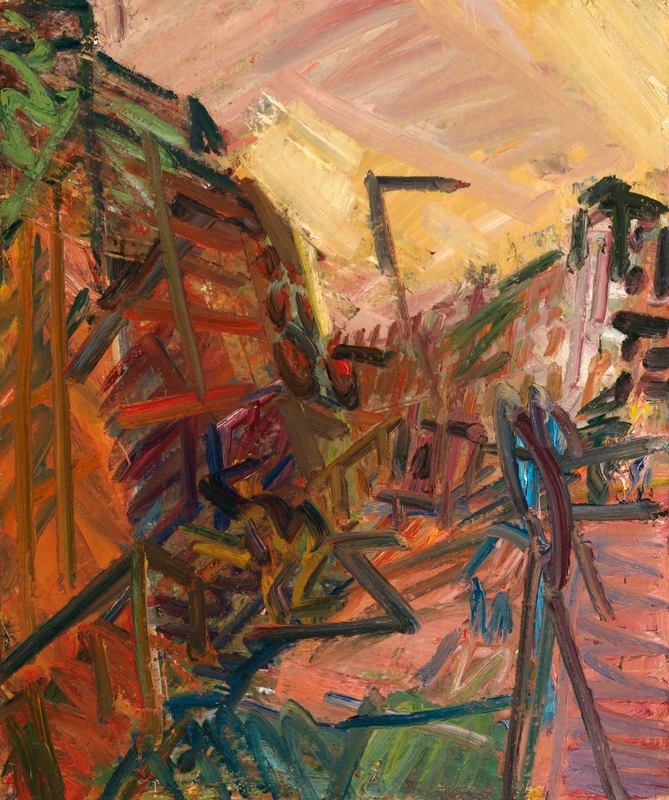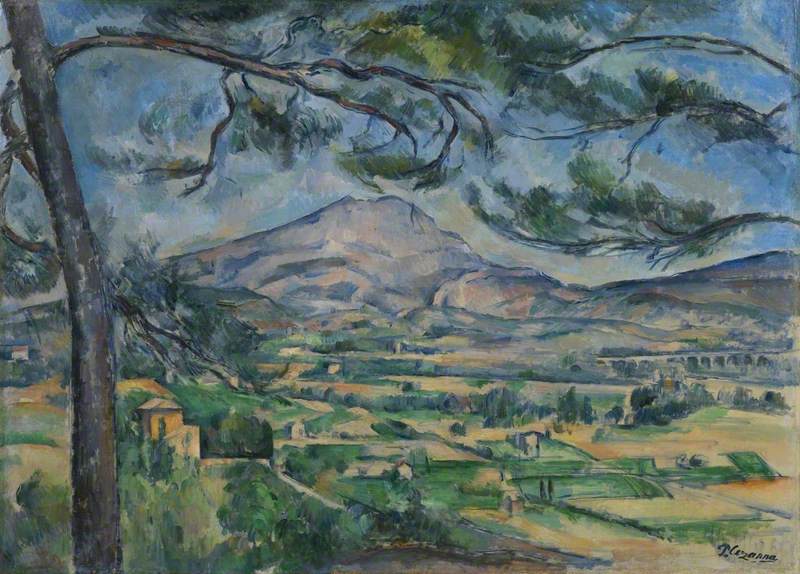Golden Squared Consulting provides bespoke marketing strategies and solutions for culturally connected industries.
Here, each member of our team shares their favourite paintings and why.
-
Diana Cawdell
Still Life 1954"I have always loved Morandi’s work: its apparent simplicity, the limited colour palette, the diffuse light that is used to create works of extraordinary beauty from carefully placed groupings of ordinary domestic objects is nothing short of miraculous. In the current circumstance, when my own world has become smaller, more domestic - more focused on hearth and home - the pared back aesthetic and ability to find beauty in the everyday, perfectly reflects my own (new) reality. I find the purity, stillness and small-scale of this exquisite still life speaks to me now, more directly than ever."
Giorgio Morandi (1890–1964)
Oil on canvas
H 26.5 x W 41 cm
Sainsbury Centre for Visual Arts
-
Lucy Barry
Going to the Match 1953"I have a connection with Lowry as he was born exactly 100 years before me on November 1st 1887 and have long admired the distinctive aesthetic of his work. I have selected this as it feels poignant at the moment: when will the next football match take place and when will people be able to flock to stadiums to support their favourite team? Lowry’s ‘matchstick’ style perfectly conveys the buzz of spectators making their way into the stadium; nothing matters more than the next 90 minutes and who will come out as champion. Whilst a slightly drab colour palette, this image gives me hope – there will be matches; there will be stadiums full of people sharing a common goal; there will be triumphs and downfalls; there will be life again."
Laurence Stephen Lowry (1887–1976)
Oil on canvas
H 71 x W 91.5 cm
The Lowry Collection, Salford
-
Clementine Perrins
Cossacks (Cosaques) 1910–11"Kandinsky has been a part of my life for so long. I grew up with a father fascinated by Russian history and in particular ballet; he was writing a book about Russian ballet dancers when he died, leaving behind a huge collection of research books, and original ballet programmes full of beautiful sketches by Bakst, Kandinsky, and Goncharova. I wrote about inter-revolutionary art for my dissertation, looking at the depiction of peasants in paintings and comparing these to original photographs. This particular work is full of Kandinsky's classic language of brush stroke and colour, looking at Russian folk stories for inspiration. He is still my favourite artist and reminds me of my past and the reasons I became so interested in art history."
Wassily Kandinsky (1866–1944)
Oil on canvas
H 94.6 x W 130.2 cm
Tate
-
Annie McGrath
Study of a Woman Standing 1920"I love this Study of a Woman Standing by Winifred Knights. There is something so real yet stylised about the figure depicted. Sharp angles and soft colours contrast to create a pose which is both dramatic and understated. Her use of light is remarkable and there is something intriguing about the fact we only see the woman from behind. Her face is in shadow and there is real strength to her form. Ironically, despite this being a nude, much is left to the imagination. Knights was the first woman to be awarded the scholarship in decorative painting by The British School at Rome, so I think she’s an important artist to have in our virtual gallery. Her landscape paintings are stunning too but this figurative work stood out to me."
Winifred Knights (1899–1947)
Oil on canvas
H 76.2 x W 50.8 cm
UCL Culture
-
Oliver Pickford
Rebuilding the Empire Cinema, Leicester Square 1962"A landmark rises out of the London mud like a girder-armed golem. Auerbach's London of the 50s and 60s was rebuilding and modernising, and he captures it here in his signature abstract impasto style. He builds the paint up into fleshy masses and limbs on the canvas, giving the work a third dimension that reflects the construction site that he depicts so viscerally. While I was studying Byzantine art history at the Courtauld Institute, I expected my experience of art to be focused on London's rich medieval collections. When I stumbled upon Auerbach's work on the top floor of the Courtauld Gallery I realised this wouldn't be the case. The experience became a touchpaper for my enjoyment of modern artworks that contain heavy use of impasto."
Frank Helmuth Auerbach (b.1931)
Oil on board
H 152.4 x W 152.4 cm
The Courtauld, London (Samuel Courtauld Trust)
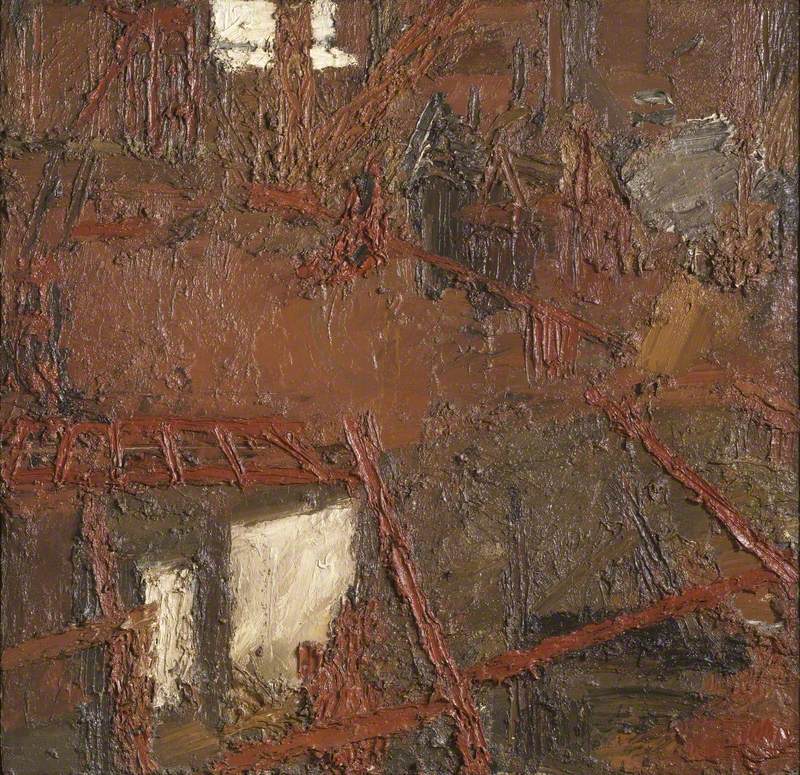 © the artist. Image credit: The Courtauld
© the artist. Image credit: The Courtauld
-
Rel Hayman
The Lac d'Annecy 1896"My grandfather came from Annecy; it’s a beautiful part of France. I first visited the town only a few years ago, the summer before I went to study at the Courtauld. Shortly after, I found this painting of the Lac D’Annecy hanging in the Courtauld Gallery, which was a serendipitous moment. It led me to take an interest in Cézanne, who was a pioneer of the modern era. I like the way he takes a conventionally picturesque scene and makes something different of it. The way he cuts off the sky gives the work a deeply pensive quality. His paintings don’t just look to copy nature; they draw attention to how we look at things. For that he is one of my favourite artists and this is one of my favourites of his paintings."
Paul Cézanne (1839–1906)
Oil on canvas
H 65 x W 81 cm
The Courtauld, London (Samuel Courtauld Trust)
